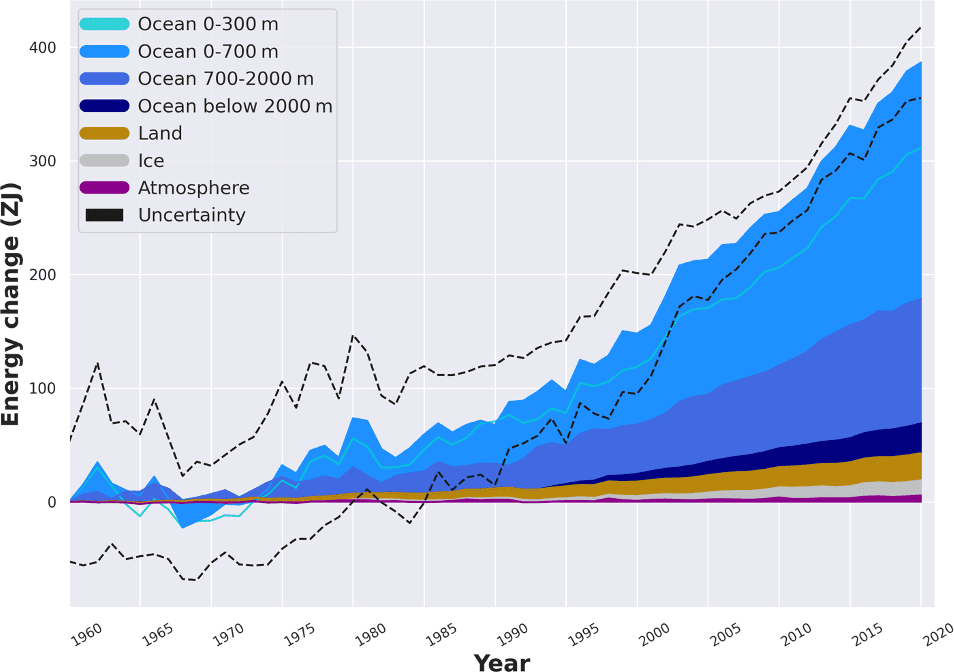Heat stored in the Earth system 1960–2020: Where does the energy go?
von Schuckmann, K., Minière, A., Gues, F., Cuesta-Valero, F. J., Kirchengast, G., Adusumilli, S., Straneo, F., Ablain, M., Allan, R. P., Barker, P. M., Beltrami, H., Blazquez, A., Boyer, T., Cheng, L., Church, J., Desbruyeres, D., Dolman, H., Domingues, C. M., García-García, A., Giglio, D., Gilson, J. E., Gorfer, M., Haimberger, L., Hakuba, M. Z., Hendricks, S., Hosoda, S., Johnson, G. C., Killick, R., King, B., Kolodziejczyk, N., Korosov, A., Krinner, G., Kuusela, M., Landerer, F. W., Langer, M., Lavergne, T., Lawrence, I., Li, Y., Lyman, J., Marti, F., Marzeion, B., Mayer, M., MacDougall, A. H., McDougall, T., Monselesan, D. P., Nitzbon, J., Otosaka, I., Peng, J., Purkey, S., Roemmich, D., Sato, K., Sato, K., Savita, A., Schweiger, A., Shepherd, A., Seneviratne, S. I., Simons, L., Slater, D. A., Slater, T., Steiner, A. K., Suga, T., Szekely, T., Thiery, W., Timmermans, M.-L., Vanderkelen, I., Wjiffels, S. E., Wu, T., & Zemp, M., 2023. Heat stored in the Earth system 1960–2020: Where does the energy go? Earth System Science Data, 15(4), 1675–1709. https://doi.org/10.5194/essd-15-1675-2023

(Image provided by Susan Wijffels)
Earth is warming due to an imbalance at the top of the atmosphere where more of the incoming energy from the sun is trapped by Greenhouse gasses. This extra heat is spread through different parts of the climate system, with the vast majority (89%) absorbed by the oceans, with the rest melting ice, warming the land and warming the atmosphere. This study tracks this extra heat since the 1960’s based on assembling observations of different elements of the climate system. Tracking this ‘extra heat’ is essential to our understanding of the rate of climate change, its impacts and our fundamental ability to model present and future climate. The warming rate from 1971–2020 is 0.48 ± 0.1 W m−2 (as a uniform flux spread over Earth’s surface) but has increased to 0.76 ± 0.2 W m over 2006–2020, signaling an acceleration of climate change. To stabilize Earths’ climate this warming rate needs to reduce to near zero, and thus this metric is the penultimate way to assess our progress in mitigating climate change.
